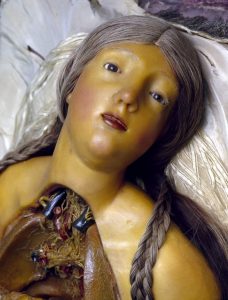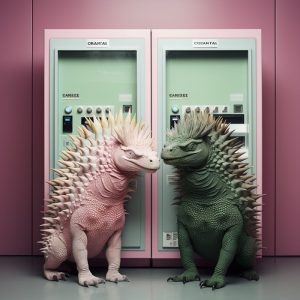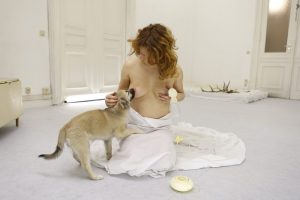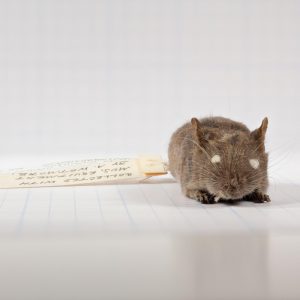“Current medical advances in the area of infertility medicine and neonatology have made total ectogenesis (the gestation of a human being entirely outside the body of a human female) less a figment of the imagination of science fiction writers … and more a realistic possibility for those living in the not so distant future.”
S Gelfand, and J R Shook, Ectogenesis – Artificial Womb Technology and the Future of Human Reproduction, New York: Editions Rodopi B. V., 2006, p2
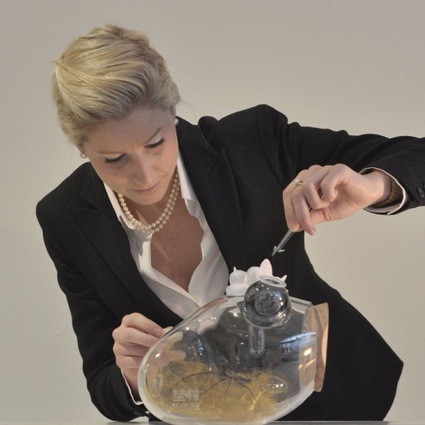
A few weeks ago, Adam Smith presented at the RCA architecture interim show in London a project called Golden Orb Spider Farm which speculates on a plausible near future where we become reliant on synthetic organs to replace body parts, in particular the womb.
The project is based on research into how spider silk might become a material of choice for prototyping scaffolds on which to grow human tissue. Research in tissue engineering has indeed found that silk is a better substance than polymeric materials to construct such ‘scaffolds’. Fully functioning hearts and wombs have already been grown artificially on silk scaffolds. For example, Canadian company Nexus Biotechnologies is manufacturing Biosteel(TM), a high-strength synthetic spider silk from the milk of genetically modified goats. The fiber material is allowing for the development of new products in a wide range of fields – from bulletproof vests to scaffolds for artificial human organs – including wombs.
Advances in reproductive science and medicine would enable the complete gestation of a human embryo outside a woman’s body, within the next 5-10 years. In the ethically complex scenario where humans are brought to life in artificial wombs, one can imagine that mother would want to demonstrate maximum love and commitment by providing the the finest and most luxurious womb they could afford. Rather than the synthetic unglamorous Biosteel, mothers might look for rarer, naturally produced alternatives. Golden Orb spider silk, the most precious silk in the world, might answer their wishes.
Last year already, a large and rare textile was made entirely of Madagascan Golden Orb spiders silk – demonstrating its inherent strength, beauty and value.
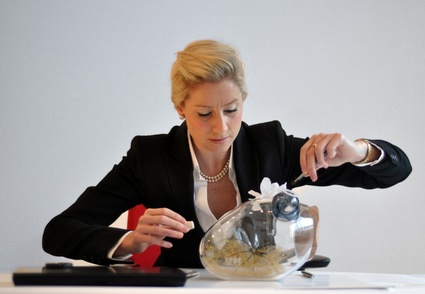 Golden Orb spider farm speculates that employers may want to persuade their high calibre employees to delay having children in return for hi-tech fertility insurance. Female employees would receive glass Gold Orb spider farms in which to house and breed spiders. The women would feed spiders with flies every day. Once a month, a silking machine would extract several metres from each spider in the farm. In due course this gift is passed on to the child that emerges from the silky womb. Once used, this object might take on a new role of a family heirloom.
Golden Orb spider farm speculates that employers may want to persuade their high calibre employees to delay having children in return for hi-tech fertility insurance. Female employees would receive glass Gold Orb spider farms in which to house and breed spiders. The women would feed spiders with flies every day. Once a month, a silking machine would extract several metres from each spider in the farm. In due course this gift is passed on to the child that emerges from the silky womb. Once used, this object might take on a new role of a family heirloom.
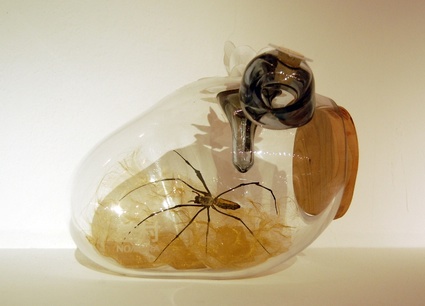 Golden Orb Spider Farm is part of a wider architectural project entitled Genatorium – Breeding Ground for the Risk Averse. The project explores societies’ tendency to implement anything that makes things safer and more egalitarian – sometimes with unintended consequences. It is based on a wide amount of research encompassing fertility technologies, the gender pay gap, health-and-safety culture and social disparity in London.
Golden Orb Spider Farm is part of a wider architectural project entitled Genatorium – Breeding Ground for the Risk Averse. The project explores societies’ tendency to implement anything that makes things safer and more egalitarian – sometimes with unintended consequences. It is based on a wide amount of research encompassing fertility technologies, the gender pay gap, health-and-safety culture and social disparity in London.
Adam Smith is a final year MA architecture student at the Architectural Design Studio 4 of the Royal College of Art in London. Tutored by Gerrard O’Carroll, Nicola Koller and Rosy Head, ADS4 researches emerging social trends and technologies to create scenarios which allow for critique and speculation.
All images courtesy Adam Smith.

